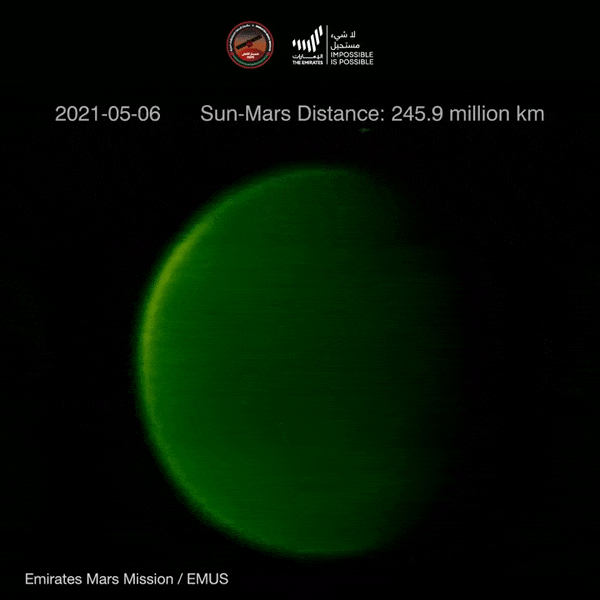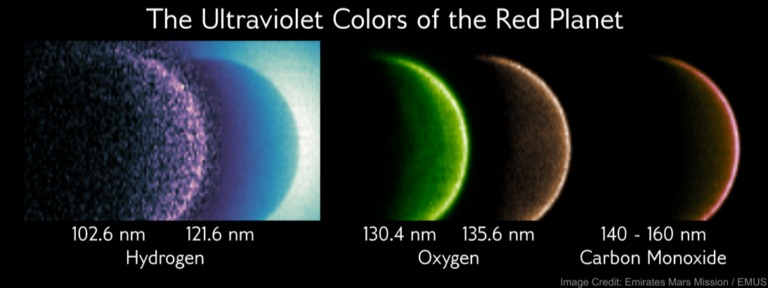The team of the Arab mission “Al-Amal” published an animated image of the ultraviolet glow of the atmosphere of Mars with a length of 1 year. An increase in the brightness of the glow occurs due to an increase in the activity of the Sun and a reduction in the distance between it and Mars. This is stated on the official mission page on Twitter.

The recording was conducted from May 2021 to May 2022. During this time, the distance from the Sun to Mars has changed from 245.9 to 211.2 million kilometers. The observations were carried out using the EMUS instrument (Emirates Mars Ultraviolet Spectrometer) at a wavelength of 130.4 nanometers, which corresponds to the radiation line of atomic oxygen.

Mars has a much more elliptical orbit than most other planets in the Solar System, which is why the amount of radiation it receives from the Sun at the perihelion point is 45% more than at the aphelion of the orbit. In addition, the Sun has become more active in recent months. Due to the influence of these factors on the animation, you can see a gradual increase in the brightness of the ultraviolet glow of the Martian atmosphere, up to the appearance of very bright areas. The glow occurs when photons, penetrating into the atmosphere, excite oxygen atoms. Small spots on the background around Mars are stars.
This video shows a series of images of atomic oxygen airglow at a wavelength of 130.4 nm collected by the EMUS instrument between May 2021 and May 2022. pic.twitter.com/cBWxxa4nY5
— Hope Mars Mission (@HopeMarsMission) July 26, 2022
Al-Amal Mission
“Al-Amal” (or “Hope”) is the first interplanetary spacecraft that was built and sent by the United Arab Emirates. The mission began its work in February 2021 after arriving in the orbit of the planet. The device observes the exosphere and the atmosphere of Mars, studying their properties and the distribution of ozone, clouds and dust in the lower layers of the atmosphere. “Al-Amal” is designed for two years, but the mission can be extended in case of further serviceability of all systems.
Follow us on Twitter to get the most interesting space news in time
https://twitter.com/ust_magazine
